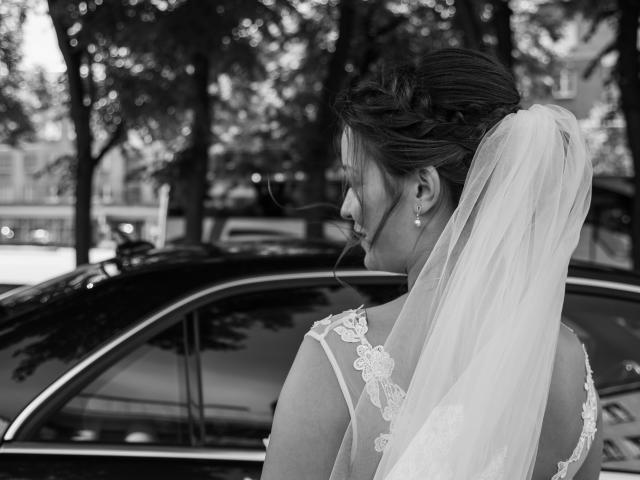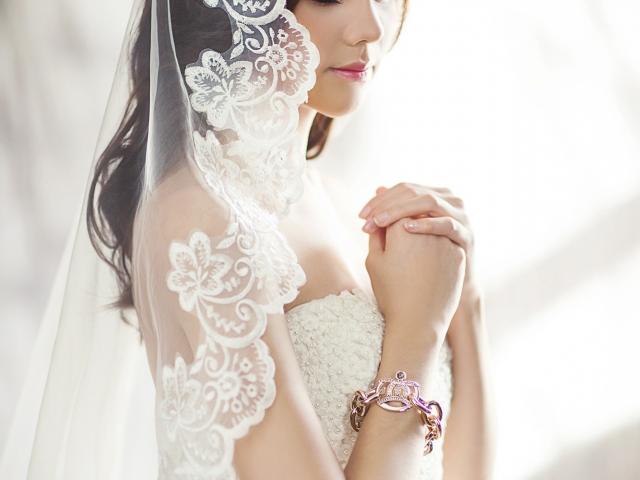Nothing shouts out ‘Wedding!’ quite like a veil. They have been around for as long as the concept of marriage has, and are still favoured by brides all over the world today.

The veil predates the importance of the wedding dress by hundreds of years. Whilst these days it is commonly thought that veils covering the hair and face are a symbolic reference to the purity, chastity and modesty of the virgin bride, the earliest known references are from ancient Rome and Greece. Here, brides wore brightly coloured veils to protect themselves from evil spirits. These were hard to see through, so the bride’s father would guide her down the aisle – hence the tradition of being given away.
In early weddings and arranged marriages, the veil became a way for the bride’s face to be concealed from the groom and his family until they were married. Just in case they changed their minds when they saw each other for the first time! This eventually morphed into the modern-day tradition that says it’s bad luck for a man to see his bride before the wedding.
In the Victorian era, the veil was transformed into more of a symbol where the bride’s status was determined by the weight, quality, and length of the veil. Elegant veils of lace and silk became popular for many years after this.
During the 1940's clothing materials were rationed – even HRH The Queen saved her coupons for her own wedding dress! Where before veils had been long, they were now no more than shoulder length and attached to a Juliet cap or a hat. After World War II, with the advent of nylon, veils incorporated synthetics and took on a bouncy and full effect softly framing the bride's face.
Fast forward to the 21st century, the bridal headpiece and wedding veil have become an important part of a bride's desire to make a statement of their unique style. It is the final crowning touch.

Unveiling style – six of the best wedding veil fashions.
Birdcage – simple and demure, these are widely thought of as retro and are perfect for vintage inspired or casual weddings.
Juliet Cap – a timeless classic that was originally in vogue during the 1920s and 30s.
Blossom Trimmed – silk blossom trimmed veils are finished with lush gardens of hand-pressed silk flowers that trail the edges or entire length of the veil.
Elbow, Fingertip, Ballet, Chapel or Cathedral – simple edge cut veil lengths that fall somewhere between the waist to a cathedral length dress train with no embellishments.
Waterfall or Fountain – gathered at the crown of the head to create a cascading effect around the face. The waterfall veil will usually have a blusher to add to the fullness of the face.
Headpiece and Bridal – brides can be overwhelmed with too many accessories, so mixing a veil with a headpiece may be a step too far. But wearing a flower crown or tiara with a simple circle blusher veil can be absolutely stunning.
